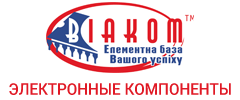Збирач потоків
Understanding Gold Soldering: Definition, Process, Working, Uses & Advantages
Gold soldering is a sophisticated metallurgical joining technique that represents the pinnacle of precision manufacturing processes. Unlike conventional soldering methods, this specialized technique involves creating permanent, high-integrity connections between gold or gold-alloy components with exceptional precision and reliability. The process goes beyond simple mechanical joining, instead creating a deep metallurgical bond that ensures optimal electrical, thermal, and structural performance.
How Gold Soldering WorksThe scientific principles underlying gold soldering are complex and multifaceted. At its core, the process involves creating an atomic-level bond between gold surfaces using a carefully selected filler material with a strategically lower melting point. The metallurgical interaction is not merely a surface-level connection but a profound interdiffusion of metal atoms that creates a seamless, integrated joint.
The fundamental mechanism begins with the careful preparation of surfaces, where even microscopic contaminants can compromise the entire soldering process. As the filler material is heated, it transitions from a solid to a liquid state, simultaneously wetting the gold surfaces and creating a capillary action that draws the molten material between the components. During this process, atomic diffusion occurs, where the atoms of the filler material intermingle with the gold surfaces, creating a bond that is often stronger and more reliable than the original base materials.
Gold Soldering ProcessSurface Preparation: The Critical First Step
Surface preparation is arguably the most crucial phase of gold soldering. This stage requires meticulous attention to detail and advanced cleaning techniques. Professionals employ a combination of chemical and mechanical methods to eliminate any potential contaminants. Specialized solvents are used to remove organic residues, while precise chemical etching or plasma cleaning techniques eliminate oxide layers and microscopic impurities.
The goal is to create an absolutely pristine surface that allows for maximum metallurgical interaction. Even a thin layer of oxidation or a microscopic particle can prevent proper bonding, leading to weak joints or complete soldering failure. Advanced cleaning techniques may include ultrasonic cleaning, chemical degreasing, and high-precision surface treatments that can remove contaminants at the atomic level.
Material Selection: A Delicate Science
Selecting the appropriate materials is a complex process that requires deep understanding of metallurgical properties. The gold alloy composition must be carefully matched with an appropriate filler material that can create a reliable bond while maintaining the desired mechanical and electrical properties. Factors such as melting point, thermal expansion coefficient, and chemical compatibility are meticulously evaluated.
Different applications demand different material characteristics. For instance, electronics may require a filler material that provides optimal electrical conductivity, while medical devices might prioritize biocompatibility and corrosion resistance. This selection process often involves extensive material testing and simulation to ensure optimal performance under various operational conditions.
Uses & ApplicationsElectronics Industry: Pushing Technological Boundaries
In the electronics industry, gold soldering is nothing short of revolutionary. Semiconductor packaging relies on this technique to create microscopic connections that form the backbone of advanced electronic devices. Hybrid microelectronics, which combine different types of electronic components, depend entirely on the precision and reliability of gold soldering techniques.
Modern smartphones, advanced medical imaging equipment, and cutting-edge aerospace technologies all benefit from gold soldering’s ability to create miniaturized, high-performance connections. The technique allows for the integration of components at nanoscale levels, enabling technological advancements that were previously impossible.
Medical and Aerospace Applications: Reliability in Extreme Conditions
In medical and aerospace domains, gold soldering’s reliability becomes paramount. Implantable medical devices require connections that can withstand the human body’s complex chemical environment, while aerospace components must endure extreme temperature variations and intense radiation.
The ability to create stable, corrosion-resistant joints makes gold soldering indispensable in these critical fields. Precision surgical instruments, satellite communication systems, and advanced sensor technologies all rely on the unique properties that gold soldering provides.
Advantages and ChallengesGold soldering offers remarkable advantages, including exceptional conductivity, corrosion resistance, and the ability to create extremely precise connections. However, these benefits come with significant challenges. The process is inherently expensive, requiring specialized equipment and highly trained professionals.
The narrow temperature window for optimal soldering demands extraordinary skill and precision. A deviation of mere degrees can compromise the entire soldering process, making it a technique that requires continuous training and technological investment.
ConclusionGold soldering represents more than just a joining technique—it is a sophisticated technology that pushes the boundaries of what is possible in manufacturing. As technological demands become increasingly complex, the importance of this precise metallurgical process will only continue to grow.
Professionals in electronics, medical technology, aerospace, and advanced manufacturing must continually invest in understanding and mastering these intricate soldering techniques to drive technological innovation forward.
The post Understanding Gold Soldering: Definition, Process, Working, Uses & Advantages appeared first on ELE Times.



